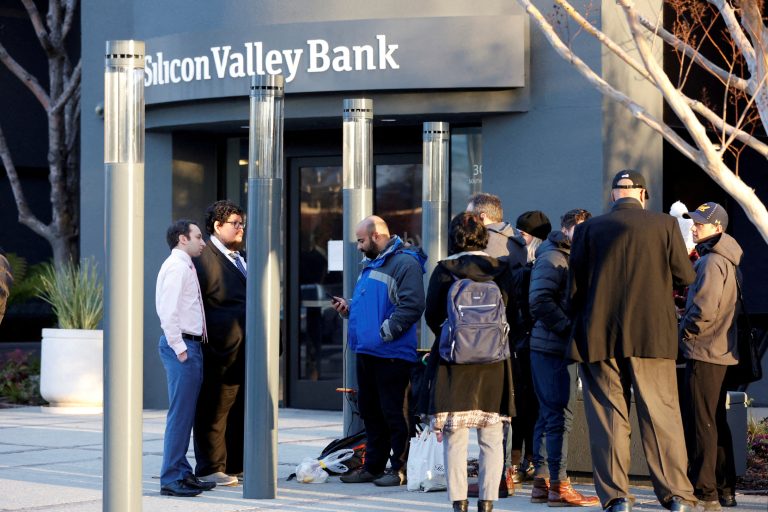Money regulators are facing a new problem: social media-catalyzed bank runs like the one that plundered the Silicon Valley Bank (SVB) earlier this month, which happened fast, unexpectedly, and uncontrollably.
Information spreading on social media during the week of March 6 claimed that some venture capital firms, including influential investor Peter Thiel’s Founders Fund, were advising companies to pull cash from tech-focused SVB.
SVB was forced to sell many of its bonds to meet depositors’ demands for cash resulting in a $1.8 billion loss, which, once communicated, panicked other depositors who withdrew $42 billion in 24 hours, resulting in the bank’s failure.
A few hours later, the Federal Deposit Insurance Corporation (FDIC) took over the bank, authorities shut SVB on March 10, and on March 13, U.S. President Joe Biden announced the resignation of all managers.
Bank runs, in themselves, are already tricky phenomena to tackle for regulators who have a few tactics at hand to mitigate the risks, but, like Todd Baker, a senior fellow at Columbia University’s Richmond Center, said, “The fact that people can communicate so much more quickly … (has) changed the dynamic of bank runs and perhaps changed the way we have to think about liquidity risk management.”
Success
You are now signed up for our newsletter
Success
Check your email to complete sign up
READ MORE:
- 186 American Banks at Risk of Suffering a Similar Fate as SVB, Researchers Say
- Central Bank Digital Currency Transactions Will Double to $213 Billion by 2030: Research Firm
- Swift Pushes Ahead With International Central Bank Digital Currency System
- Credit Suisse Secures $54-billion Lifeline as Authorities Rush to Prevent Global Bank Crisis
“It’s possible that the issue is that deposits have never moved so fast, and that is what formed the basis of this decision – the outflows at SVB were without equivalent,” said Nicolas Veron, a senior fellow at the Peterson Institute for International Economics in Washington.
Still, some other scholars, like Dan Awrey, a law professor at Cornell University, blamed the fallout from SVB on an “absence of a communications strategy.”
“All of that was just lacking between Friday morning and Sunday in a way that allowed the Twittersphere to really take hold of the information dynamic and the narrative,” he added.
Some, like Patricia McCoy, a law professor at Boston College, advocate the need to monitor social media and even create a set of protocols to help them decide how to address such situations and control the narrative.
“They need to be looking for any signs of unsubstantiated rumors, panic starting to mount on social media, and they’ve got to do it around the clock,” McCoy said.
But however immaculate and fine-meshed the damage control measures may be, they cannot gloss over the vulnerability of today’s monetary system or control people’s behavior when it comes to their survival instincts when their life savings are at stake.
Shotgun marriage
And in its wake, the fall of the SVB will snowball others into the abyss. In the U.S., regional banks like the First Republic Bank have since come under pressure, with its share price diving 47 percent on Monday, March 20, over worries about its solvability.
And in Switzerland, on March 19, the renowned 140-year-old Credit Suisse was drowning in a deluge of printed fiat money and had to be rescued by archrival UBS in a government-engineered shotgun marriage following a collapse in investor confidence.
The Swiss banking giant already took a social media punch last year when it breached liquidity requirements at some of its entities after a social media report sparked client exits.
Meanwhile, in the U.S., the plans of the Treasury Department to insure all bank deposits after the SVB debacle may have surprised many. Specialists said it indicates how terrified authorities are when depositors set out to withdraw cash from possible other creditors.
$18 trillion rescue plan
For this purpose, the Treasury Department, under Janet Yellen’s supervision, created a Federal Deposit Insurance Corporation (FDIC), a $125-billion reserve pot. The Department also has a $25 billion Exchange Stabilization Fund (ESF). For example, the latter pot has been used to bail out Silicon Valley Bank account holders.
The total value of possible deposits, i.e. all the money that could be withdrawn across all U.S. banks, is assessed to be 18 thousand billion ($18 trillion).
Should the Treasury Department decide to use the FDIC reserve pot of $125 billion, one would have a total pool of $150 billion —less than 1 percent of the necessary amount of money to save account holders’ assets of any bank.
That would mean the Treasury would have to borrow $18 trillion from the Fed, which, in turn, would create a balloon of money out of thin air many times its current size.
Reuters contributed to this report
















